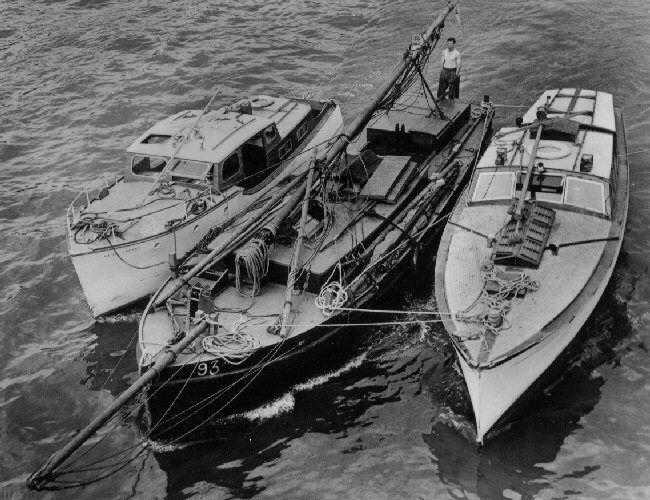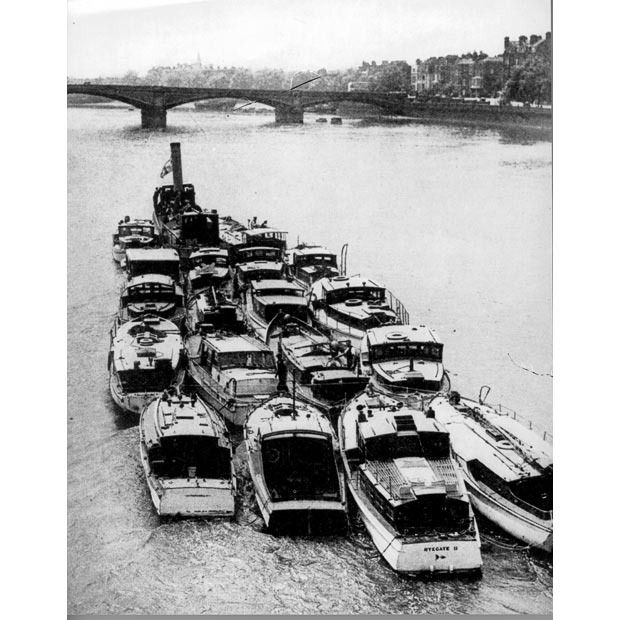Going a bit off the topic of the State of British Ground Forces gents ...
Still while we are discussing the Royal Navy ..
'Found some details for the Counter Invasion Methods in Dover Command.
This is dated 30th June 1940.
NAVAL MEASURES.
2. - The detailed measures are laid down in Dover Operation "Napoleon".
These are broadly:-
(a) Destroyer patrols in the Channel, to intercept and engage the enemy at sea, and to support the small craft (b) and (c) below;
(b) Listening patrols of asdic trawlers about 4 miles off-shore to detect the approach of the enemy, to report and attack him;
(c) Inshore patrols of drifters and motor-boats to report and attack the enemy.
3. The methods of reporting the enemy, both by simple firework signal to our forces ashore, and by R/T or W/T to the Flag Officer Commanding Dover.
On 17th September, the patrols following were established and were to be filled as ordered by Flag Officer Commanding Dover.
Patrol - O.D.1. Position - Between N. Goodwin Light Vessel and charted position of South Falls Buoy. Normally Patrolled By - Two or more M/S (MineSweeping Trawlers). Remarks -
Patrol - O.D.3. Position - Between No. 10 buoy and a line drawn 147 degrees from Hastings. Normally Patrolled By - Destroyers. Remarks - Will not be filled concurrently with patrols O.D.6. and/or O.D.7.
Patrol - O.D.5. Position - Between No. 1 buoy and No. 10 buoy. Normally Patrolled By - Destroyers or A/S (Anti-Submarine) trawlers. Remarks - If Destroyers are not available the patrol will be kept by two or more A/S trawlers if available.
Patrol - O.D.6. Position - Between No. 10 buoy and "D" buoy. Normally Patrolled By - Two or more trawlers. Remarks - If O.D.5 is filled by destroyers, A/S trawlers if available, will assist M/S trawlers to fill patrols O.D.6 and O.D.7 (as arranged by Commander A/P and Commander M/S). If A/S trawlers are employed instead of destroyers on O.D. 5, then O.D. 6 and O.D. 7 will be filled with M/S trawlers only.
Patrol - O.D.7. Position - Between "D" buoy and Lydd Light Float. Normally Patrolled By - Two or more trawlers. Remarks - As patrol O.D.6.
Patrol O.E.1. Position - To seaward of the traffic route and northeastwards of a line drawn 135 degrees from Dungeness. Normally Patrolled By - One division of Destroyers. Remarks - Special patrol, if two divisions of destroyers are available in the Command.
Patrol - O.E.2. Position - To seaward of the traffic route and Southwestwards of a line drawn 135 degrees from Dungeness. Normally Patrolled By - One division of Destroyers. Remarks - Special patrol, if two divisions of destroyers are available in the Command.
OBJECT OF PATROLS.
3. The object of the above patrols is :-
(a) To report and attack enemy vessels encountered,
(b) To act in suport of small craft inshore patrols
(c) To prevent enemy submarine, E-boat and mining activity on the traffic route.
SPECIAL INSTRUCTIONS FOR DESTROYERS.
4. The destroyer patrols in particular are stationed with the object of having the ships at sea in the most favourable state of readiness for dealing with any invading force entering or trying to cross the Straits.
5. Attention is called to paragraphs 10 and 11 of Operation "NAPOLEON" but Senior Officers of Units are not to hesitate to use their initiatives as the situation develops.'
I like the emphasis given to "report and attack". Very important to get them that way around of course.


